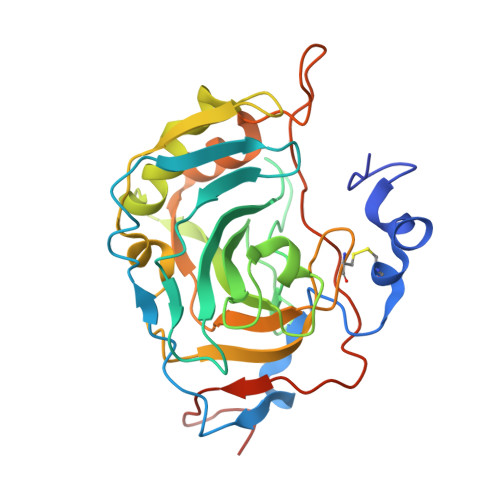The structural comparison between membrane-associated human carbonic anhydrases provides insights into drug design of selective inhibitors.
Alterio, V., Pan, P., Parkkila, S., Buonanno, M., Supuran, C.T., Monti, S.M., De Simone, G.(2014) Biopolymers 101: 769-778
- PubMed: 24374484
- DOI: https://doi.org/10.1002/bip.22456
- Primary Citation of Related Structures:
4LU3 - PubMed Abstract:
Carbonic anhydrase isoform XIV (CA XIV) is the last member of the human (h) CA family discovered so far, being localized in brain, kidneys, colon, small intestine, urinary bladder, liver, and spinal cord. It has recently been described as a possible drug target for treatment of epilepsy, some retinopathies as well as some skin tumors. Human carbonic anhydrase (hCA) XIV is a membrane-associated protein consisting of an N-terminal extracellular domain, a putative transmembrane region, and a small cytoplasmic tail. In this article, we report the expression, purification, and the crystallographic structure of the entire extracellular domain of this enzyme. The analysis of the structure revealed the typical α-CA fold, in which a 10-stranded β-sheet forms the core of the molecule, while the comparison with all the other membrane associated isoforms (hCAs IV, IX, and XII) allowed to identify the diverse oligomeric arrangement and the sequence and structural differences observed in the region 127-136 as the main factors to consider in the design of selective inhibitors for each one of the membrane associated α-CAs.
Organizational Affiliation:
Institute of Biostructures and Bioimaging, CNR, Via Mezzocannone 16, 80134, Naples, Italy.



















